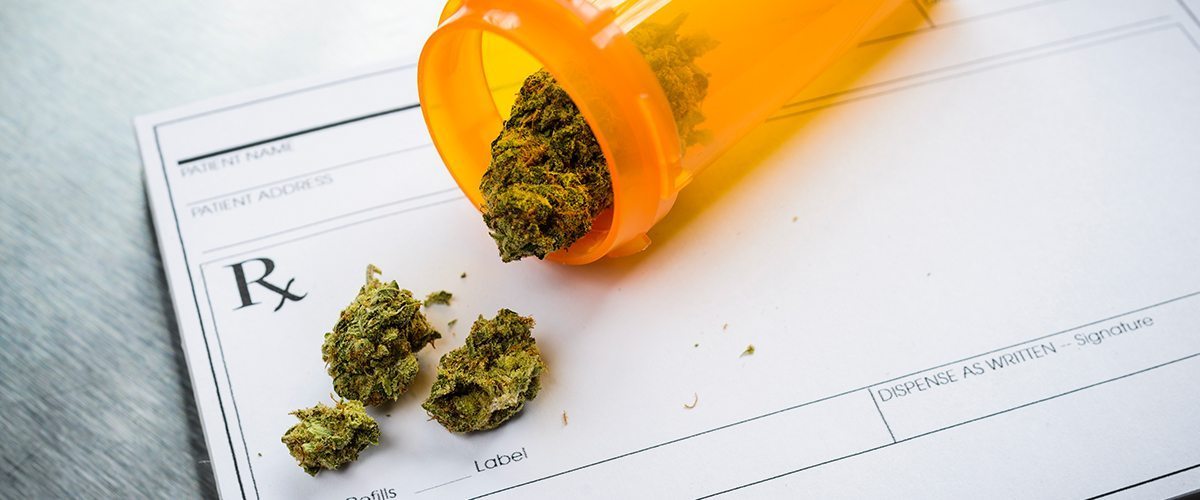A new study by researchers from the University of Georgia has found that legal access to medical marijuana significantly reduces the number of medical prescriptions and associated insurance costs.
Prescription drug use is down in states that have legalized medical marijuana, according to a study published in the July issue of Health Affairs. The University of Georgia researchers also found a reduction in spending by Medicare Part D, the federal-government program used to help patients pay for prescription drugs.
Researchers Ashley C. Bradford and W. David Bradford estimated that the Medicare savings were $165.2 million in 2013, the same year that 17 states and Washington D.C. implemented medical marijuana laws.
To come up with the findings, the researchers collected data on prescriptions by Medicare Part D enrollees from 2010 to 2013, which added up to a total of over 87 million physician-drug-year observations. They then narrowed down the results to only include conditions for which cannabis could serve as an alternative treatment. These nine conditions were anxiety, depression, glaucoma, nausea, pain, psychosis, seizures, sleep disorders, and spasticity.
The study’s findings were significant.
In the states and territory with medical marijuana laws, each doctor prescribed an average of 265 fewer doses of antidepressants, 486 fewer doses of seizure medication, 541 fewer doses of anti-nausea drugs, 562 fewer doses of anti-anxiety medication, and 1,826 fewer doses of painkillers in the year. Medicare savings would have been around $468 million if all U.S. states had medical marijuana legislation.
Because the number of prescriptions and Medicare spending on drugs such as antidepressants and opioids fell in states with medical marijuana laws, the researchers were comfortable in concluding that the drop was directly correlated to legal access to cannabis. Prescriptions for other medicines for which cannabis isn’t an alternative, such as blood-thinners, anti-viral drugs, and antibiotics, didn’t drop.
“The results suggest people are really using marijuana as medicine and not just using it for recreational purposes,” said the study’s lead author Ashley Bradford.
One of the examined conditions, glaucoma, did experience a small increase in prescription drug use. While research has shown that cannabis effectively reduces intraocular pressure, the effects last only an hour or so. The researchers hypothesized that it was the short duration of relief by marijuana that may have caused a greater demand in traditional glaucoma drugs.
The researchers are currently investigating the effect of medical marijuana laws on the number and cost of prescriptions covered by Medicaid, the nation’s social health care program for low-income families and individuals. They are still finalizing their conclusions but told NPR that they have observed a greater drop in prescription drug payments.
Twenty-five states and Washington D.C. have adopted medical cannabis legislation since 1996, with Ohio and Pennsylvania being the most recent to pass laws allowing cannabis for therapeutic purposes. Arkansas and Florida will vote on medical marijuana initiatives this November, and campaign efforts for ballot qualification are still underway in Missouri.
Cannabis is currently classified by the federal government as a Schedule I substance, so doctors are not legally allowed to prescribe it. Rather, in states that have adopted legislation, they must recommend it to patients. Due to its classification, medical marijuana is not covered by any insurance plans.
“Our findings and existing clinical literature imply that patients respond to medical marijuana legislation as if there are clinical benefits to the drug, which adds to the growing body of evidence suggesting that the Schedule 1 status of marijuana is outdated,” the study concluded.
The Drug Enforcement Agency has said they are considering rescheduling cannabis to a Schedule II substance, which would make it easier for doctors to prescribe and would open it up to insurance coverage.






